Empty federal offices ‘are costing taxpayers $2.8 MILLION a DAY’
Federal workers still refusing to return to the office after the pandemic is costing American taxpayers an estimated $2.5 million per day.
Last week, a bombshell report revealed that all federal agencies are at less than 50 percent capacity, six months after the COVID emergency was declared over.
A new projection suggests these abandoned buildings will leave a huge bill in the U.S. government's vast portfolio.
Meanwhile, federal employees have taken advantage of relaxed telework policies by holding meetings in bathtubs, logging out of happy hour early and being on the clock during a round of golf.
The federal government spends $2 billion a year on maintaining its office network and more than $5 billion annually on leases.
Based on this forecast, if half of it were empty it would cost $2.5 million a day, Taxpayers Protection Alliance chairman David Williams told DailyMail.com.
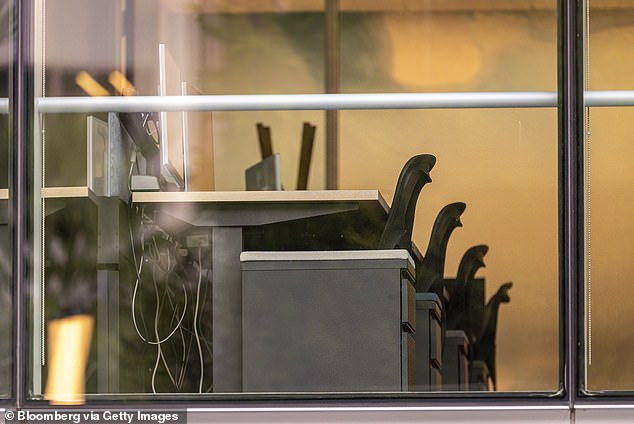
Federal workers still refusing to return to the office after the pandemic are costing American taxpayers an estimated $2.5 million per day (file image)
“There is no excuse for this because this is an easy bipartisan issue to solve,” Williams added.
“It just takes a little common sense to consolidate and get rid of excess space.” The private sector does this all the time, so there is no excuse for the federal government not to do this.”
According to a memo from the Government Accountability Office (GAO) to Senator Joni Ernst, obtained last week by DailyMail.com, no federal agency has more than half of its staff in the office.
The shocking findings come after Biden formally ended the COVID-19 emergency in May and his chief of staff pushed for the federal bureaucracy's return to in-person work by the fall.
He also famously declared the pandemic “over” in September 2022, surprising members of his own team.
The data shows “estimated three-month average space usage” statistics collected for 24 agencies over one-week periods in January, February and March 2023.
The agency with the largest percentage of office workers during the three months was the Ministry of Foreign Affairs at 49 percent. The Department of Housing and Urban Development (HUD) took home the award for the least use of space (7 percent).
The Social Security Administration pegged HUD at a 7 percent occupancy rate, followed by the Small Business Administration at 9 percent.
The General Services Administration (GSA) put the Department of Agriculture at a paltry 11 percent.
“The abandoned Department of Housing and Urban Development building is a sad symbol of the Biden administration's failure,” Ernst told DailyMail.com in an exclusive statement.
“Under Biden inflation, buying and renting is a lot more expensive, and instead of taking the homeless off the streets, HUD doesn't even have anyone home,” she continued.
The Iowa senator is calling for the 'end' of the Biden administration, allowing federal buildings to remain vacant at taxpayer expense.
She has previously called on the government to sell off unused space and return the money to taxpayers.
Congress has stepped up scrutiny of government agencies and their telework policies as we mark the months since President Biden formally ended the COVID-19 emergency.
Ernst and other lawmakers say billions in taxpayer money have been wasted on unused federal office space.
According to the Government Accountability Office (GAO), more than 75 percent of available office space across 17 different federal agencies remains vacant.
And according to a recent letter from the General Services Administration (GSA), which DailyMail.com obtained last month, the agency says the use of office space is under scrutiny.

A Department of Veterans Affairs worker from Atlanta posted a series of Instagram stories from March from the bathtub with the caption: “My office for the next hour.”
The memo showed that GSA had an occupancy rate of 11 percent.
“My office will address GSA's use of space in our future oversight efforts,” Inspector General Robert Erickson wrote in late September.
“For example, we are currently considering an audit to examine whether GSA has appropriately evaluated the needs and use of physical space to account for increased employee telework and remote positions,” Erickson wrote.
The GSA also recognized “challenges” posed by space usage in a new hybrid work model.
Federal employees have benefited from work-from-home policies in several ways.
Damning reports reveal that government employees have attended meetings while taking a hot tub, still got paid on the golf course, and attended happy hours while on the job.
This is happening as the passport backlog continues and veterans have to wait months for appointments with their doctors.
Biden's chief of staff Jeff Zients issued a directive ordering all federal employees to return to the office this fall after years of working remotely.
“We are returning to in-person work because it is critical to the well-being of our teams and will enable us to deliver better results for the American people,” Zients said in a letter to all Cabinet heads, adding that it is a “ priority of the president.”
But it's unclear how many total federal employees will continue to telework — a statistic Republicans have unsuccessfully requested.
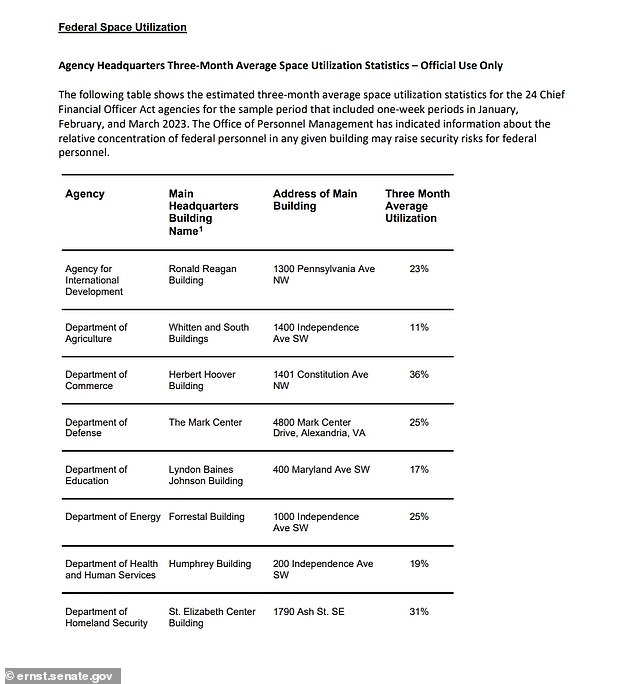
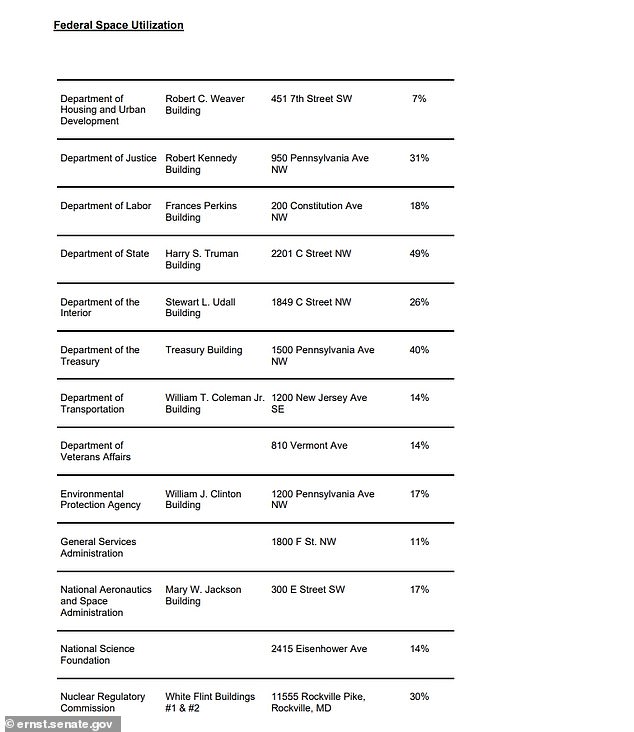
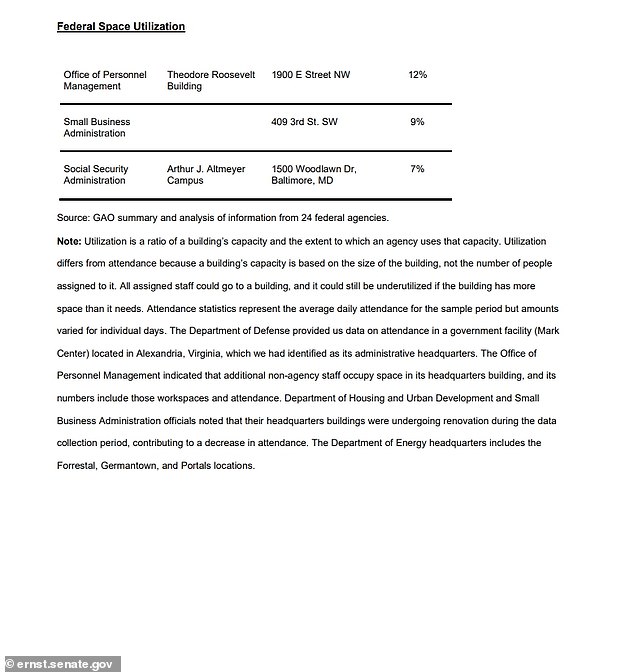
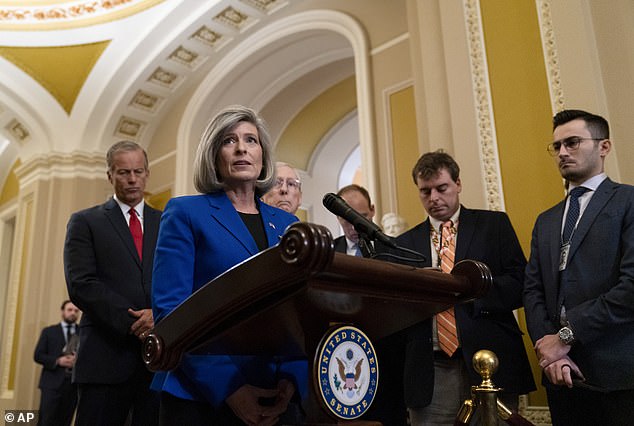
Sen. Joni Ernst, R-Iowa, and other lawmakers say billions of taxpayer dollars have been wasted based on unused federal office space
